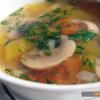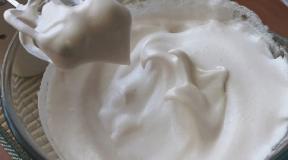Asparkam - instructions for use. Pharmacological action of asparkam What are asparkam tablets for?
Asparkam- a mineral supplement containing magnesium.
Potassium and magnesium ions, as important intracellular cations, are involved in the work of a number of enzymes, in the process of binding macromolecules with subcellular elements, and in the mechanism of muscle contraction at the molecular level. The ratio of extra- and intracellular concentrations of potassium, calcium, sodium and magnesium ions affects the contractility of the myocardium. Aspartate as an endogenous substance is a carrier of potassium and magnesium ions, has a pronounced affinity for cells, its salts undergo dissociation only slightly. As a result, ions penetrate into the intracellular space in the form of complex compounds. Magnesium aspartate and sodium aspartate improve myocardial metabolism. An insufficient amount of potassium and magnesium in the body increases the risk of developing arterial hypertension, atherosclerotic lesions of the coronary vessels, cardiac arrhythmias, myocardial pathology.
Indications for use:
Indications for the use of the drug Asparkam are:
- Additional therapy for chronic heart diseases (with heart failure, in the postinfarction period), with heart rhythm disturbances, especially with ventricular arrhythmias.
- Additional therapy in the treatment of digitalis drugs.
- In conditions accompanied by hypokalemia and hypomagnesemia (including overdose of saluretics).
Mode of application:
The usual daily dose of the drug Asparkam for adults is 1-2 tablets 3 times a day.
The dose can be increased to 3 tablets 3 times a day.
Gastric juice can reduce the effectiveness of the drug, so it is recommended to take the tablets after meals.
The course of treatment is determined by the doctor.
Children. There is no experience of using the drug for children.
Side effects:
When using the drug Asparkam side reactions develop very rarely:
from the digestive tract: nausea, vomiting, diarrhea, abdominal pain, discomfort or burning sensation in the epigastric region, gastrointestinal bleeding, ulcers of the mucous membrane of the digestive tract, dry mouth;
on the part of the cardiovascular system: impaired myocardial conduction, lowering blood pressure, AV block;
from the central and peripheral nervous system: paresthesias, hyporeflexia, convulsions are possible;
allergic reactions: itching, redness of the skin of the face, rash;
from the respiratory system: respiratory depression is possible (due to hypermagnesemia);
others: feeling hot.
Contraindications:
Contraindications to the use of the drug Asparkam are: hypersensitivity to the components of the drug; acute and chronic renal failure; Addison's disease; hyperkalemia, hypermagnesemia; atrioventricular block II-III degree; cardiogenic shock (BP< 90 мм.рт.ст.).
Pregnancy:
Data on the negative effect of the drug Asparkam during pregnancy or lactation are absent. However, the use of the drug is possible if, in the opinion of the doctor, the expected benefit to the mother outweighs the risk to the fetus or child.
Interacting with others medicines:
Due to the presence of potassium ions in the preparation during use Asparkama with potassium-sparing diuretics, ACE inhibitors, beta-blockers, cyclosporine, the risk of hyperkalemia increases (it is necessary to control the level of potassium in the blood plasma) and the inhibitory effect on intestinal motility increases.
The drug inhibits the absorption of oral forms of tetracycline, iron salts and sodium fluoride (you must adhere to the three-hour interval between doses).
Asparkam enhances the effect of drugs that stimulate trophic processes in the myocardium; prevents the development of hypokalemia caused by the use of saluretics, corticosteroids, cardiac glycosides. Asparkam reduces the cardiotoxic effect of cardiac glycosides.
With simultaneous use with antidepolarizing muscle relaxants, the neuromuscular blockade increases, with drugs for anesthesia (ketamine, hexanal, fluorothane) - the central nervous system is inhibited.
Asparkam may reduce the effectiveness of neomycin, polymyxin B, tetracycline, and streptomycin.
Overdose:
At the moment, cases of overdose Asparkama not registered.
Theoretically, overdose may develop symptoms of hyperkalemia (nausea, vomiting, diarrhea, abdominal pain, metallic taste in the mouth, bradycardia, weakness, disorientation, muscle paralysis, paresthesia of the extremities) and hypermagnesemia (facial flushing, thirst, arterial hypotension, hyporeflexia, disturbance neuromuscular transmission, respiratory depression, arrhythmia, convulsions). On the electrocardiogram, an increase in the height of the T wave, a decrease in the amplitude of the P wave, and an expansion of the QRS complex are recorded.
Treatment: drug withdrawal, symptomatic therapy (intravenous administration of calcium chloride solution at a dose of 100 mg / min), if necessary - hemodialysis.
Storage conditions:
A drug Asparkam should be stored in its original packaging at a temperature not exceeding 25 ° C. Keep out of the reach of children.
Release form:
Asparkam - pills.
Packing: 50 tablets in a blister; 50 tablets in a blister, 1 blister in a pack.
Composition:
1 tablet Asparkam contains magnesium asparaginate 0.175 g; potassium asparaginate 0.175 g
Excipients: corn starch, polysorbate-80, calcium stearate, talc.
Additionally:
At long-term use drug Asparkam it is necessary to monitor the level of potassium and magnesium in the blood, and also requires regular monitoring of electrolyte hemostasis and ECG data.
Asparkam, as a preparation containing potassium and magnesium, should be used with caution in patients with myasthenia gravis; in conditions that can lead to hyperkalemia, such as acute dehydration, widespread tissue damage, in particular in severe burns. For this category of patients, it is recommended to regularly monitor the concentration of electrolytes in the blood serum.
Asparkam should not be used in patients with gastroduodenal ulcers or obstruction.
Asparkam does not affect the reaction rate when driving or operating other mechanisms.
Asparkam is one of the most important drugs, a source of magnesium and potassium. The elements are in a form that allows the body to absorb almost 100% of these two components of the drug. Positively affecting cardiovascular system, on muscle tissue, Asparkam is not a hormonal agent. Therefore, it is actively used by athletes.
Composition, release forms, types, dosages

Asparkam's formula, developed back in Soviet times, remains unchanged. Today there are several names for this drug, but absolutely all of them contain the word "asparkam" with the addition of some prefix, for example, "-pharmac", "-ROS", "-L" and others. Prefixes serve as a kind of designation for belonging to pharmaceutical company... But the composition, both chemical and mass, is the same. Why is it so? Each company must register its drug on the pharmaceutical market so that the buyer understands in which city the manufacturer is.
Also, the name may reflect the form in which it is issued:
- in the form of tablets, the content in the dry form of substances: 175 (mg, potassium asparaginate) x 175 (mg, magnesium asparaginate);
- preparation for injection, substances in liquid form, ions of Mg and K in an asparaginate compound: ampoules 5, 10, 20 (ml);
- preparation for infusions (droppers), substances in liquid form, ions of Mg and K in the asparaginate compound: tubes 200 and 400 (ml).
Additionally, corn starch is added to Asparkam tablets, it does not affect the body in any way, and does not affect the action of the active ingredients. The main function of starch is to shape tablets. Sorbitol and purified distilled water are added to solutions for injections and infusions.
Therapeutic effects of Asparkam
Already by the composition it is clear that the action of the drug is based on the action of its constituent chemicals: potassium and magnesium. The most important and basic function of Asparkam is the replenishment of potassium and magnesium ions. When these substances are replenished in the human body, the metabolism improves.
Of the most important functions of ions of elements, the following can be designated:
Potassium
One single positive ion in all cells of the body is potassium. Due to this ion, all the main intracellular functions occur - the synthesis of ATP (adenosine triphosphoric acid), the synthesis of proteins and glycogen, as well as acetylcholine. ATP synthesis provides a huge amount of energy already at the cellular level. Glycogen synthesis is a store of substances that, if necessary, may be needed for conversion into ATP.
Potassium is necessary to provide the body with energy and supply "for hungry times". The formation and synthesis of proteins enables the human body to renew itself at the cellular level: old cells are replaced with new ones. Acetylcholine, its synthesis is the correct functioning of nerve fibers, a quick and high-quality response to a nerve impulse.
Magnesium
Magnesium does not affect the direct, the speed and work of the body, but it is a catalyst and provides the work of more than three hundred enzymes in the human body. The role can be said to be of minor importance, but nevertheless, many chemical reactions are simply not possible without the Mg ion.
Enzymes, in turn, are involved in almost all bodily functions. For example, magnesium is a participant in all chemical reactions of ATP (adenosine triphosphoric acid), enhances the action of potassium in the body. We can say that, working in a duet, these two elements speed up all processes, significantly improve the quality of each cell.
Potassium and magnesium ions
Potassium and magnesium ions perform together another very important function - they preserve the polarity of the membrane of each cell. The cell retains its integrity, foreign substances do not get inside, and the waste products of the cell are removed from the cell correctly and on time.
The unique chemical formula of Asparkam, in which potassium and magnesium ions reach every cell: asparaginate in connection with ions.
Working at the cellular level, the following therapeutic effects appear:
- replenishment of Mg and K ions (hypomagnesemia and hypokalemia, respectively);
- improving metabolism at the cellular level;
- metabolism in the heart muscle is significantly accelerated;
- improves heart function - eliminates arrhythmia, increases the endurance of the heart muscle;
- in general, the endurance of the whole organism increases.
Asparkam - indications for use
Application of the drug Asparkam:
- complex therapy for heart diseases;
- if there is a lack of Mg and K ions in the blood, a drug is prescribed for treatment based on the results of a blood test;
- as an additional agent, Asparkam is actively used by athletes.
In sports, Asparkam is used as an additional remedy for prolonged physical exertion, chronic disorders heart rate during training, overtraining.
Advice: such use should be strictly regulated by doctors and trainers.
The use of Asparkam only on the recommendation of a doctor and after examination. A positive effect "on the face", but nevertheless it is a medicine, and prescribing to oneself is unacceptable.
Instructions for use
Asparkam is a medicinal product, the use of which is only on the recommendation of a therapist.
Asparkam tablets
The tablets are used as follows: two Asparkam tablets are drunk three times a day with a course of a month. The standard Asparkam course is three to four weeks. Advice: It is important that the tablets do not bite, do not crumble, do not crumble, but are washed down whole with a small amount of water. The tablets themselves are small in size, so it is almost impossible to choke on them.
V preventive measures it is also applied in courses of one to two months, one tablet three times a day. The course with Asparkam can be extended up to six months. But every two weeks, it is imperative to do a blood test to prevent an overdose, or, conversely, to increase the dose of the drug to reach the norm. With indicators where the norm of potassium and magnesium has been reached, the course of taking the drug must be stopped.
Advice: the maximum number of Asparkam tablets per day is 6 pieces. Only six tablets a day can be absorbed by the body and give the effect of taking. If the amount is increased, the remaining tablets will not participate in the metabolism in any way, they will simply be excreted in the urine. Taking Asparkam more than according to the instructions, the load on the kidneys increases.
Solutions for intravenous injection, infusion
They are used only for treatment. There are a number of management features:
- after opening, Asparkam must be injected immediately with a syringe (jet) or with a dropper (diffuse);
- the appearance of any precipitation, turbidity is not permissible, only a clear solution of Asparkam can be used in treatment;
- if any sediment is found in an ampoule or tube before use, or the solution is cloudy, it is strictly forbidden to use it;
- if the solution itself is transparent, and becomes cloudy after entering the syringe, cannot be used.
A solution in an open ampoule or tube is never left for later, even a refrigerator will not help in the preservation of all the properties of the medicine.
The ampoules are opened immediately before injection. Solution active substance mixed with NaCl (saline). The standard course is 2 injections or droppers per day, 10 or 20 ml of Asparkam. It is introduced slowly, no more than 5 ml per minute. After completing the course, they usually take a blood test. The course is 5 days.
The opening of the infusion solution is also carried out just before the procedure itself. Asparkam's solution is injected directly intravenously with a dropper. For this, as a standard, no more than 300 ml is injected diffusely 1-2 times a day, the maximum rate is no more than 5 days. The dropper injection rate is not more than 1.5 ml per minute.
Precautionary measures
Asparkam is a drug. Reception should be started only after examination and receiving recommendations from the attending physician. It is also necessary to monitor the blood test, if the norm of the elements is reached, the course of taking Asparkam is interrupted.
Advice: even for prevention purposes, it is not prescribed independently, to oneself. This is fraught with unpleasant consequences.
Special care is required if you have:
- liver failure during exacerbation;
- blood acidosis (metabolic);
- various disorders in the work of the kidneys.
You should also be especially careful to use drugs containing potassium, and Asparkam. In this case, blood concentration control is mandatory.
Overdose
Asparkam, like many other medicines, has its own symptoms in case of an overdose.
Some of the most obvious signs are:
- heart disorders - slow heartbeat, heart block, in especially difficult cases, daistolic cardiac arrest is possible, and paralysis of the heart muscles with subsequent arrest;
- nausea, vomiting, acute malaise;
- on the part of the respiratory system - interrupted breathing, inability to breathe due to paralysis in the airways;
- urinary incontinence due to weakening of the muscles of the genitourinary system.
In case of an overdose with Asparkam, you should immediately contact a specialist and call an ambulance. To reduce the concentration of potassium and magnesium ions, physiological saline (sodium chloride NaCl) is usually injected intravenously. It is also possible to use drug acceleration to remove elements from the body.
It is important that overdose is most often observed after using injections or droppers. When taking the pills, the overdose has not yet been recorded.
Interaction with other medications
Take with caution with drugs that can provoke the effect of hyperkalemia (excess K ions in the blood).
For example:
- diuretics (Spironolactone, Veroshpiron, etc.), the main function of which is to save potassium ions;
- synthetic or natural drugs that are for the treatment of heart, they are more often called "angiotensin-converting enzyme inhibitors" ( ACE inhibitors: Ramipril, Captopril, Enalapril, etc.);
- Beta-blockers (Nebilet, Anaprilin, Concor, etc.).
With tetracycline, time limits should be observed, Asparkam and tetracycline preparations should be taken with a difference of at least 3 hours, since the absorption of iron and sodium fluoride slows down.
Strengthens the effect of anesthesia, as well as drugs of antidepolarizing muscle relaxants. In some cases, it can reduce the effectiveness of certain antibiotics, for example, Neomycin.
Asparks for children and babies

The appointment of this drug in childhood in exceptional cases, when there is an obvious shortage of potassium and magnesium ions in the child's blood. Only Asparkam tablets are prescribed for children. Injections can only be used if the child's life is at risk. The dosage is prescribed only after examination by a doctor and for each child the dosage and the duration of the course of treatment are individual.

So, children under one year old maximum dose the drug can be up to 1/4 of a tablet per day, older children, depending on age, may be given from ½ to 1 whole tablet per day. The dosage can be adjusted depending on the repeated results obtained.
Application during pregnancy

Prophylactic courses of taking Asparkam during pregnancy are not possible. Reception is prescribed only when it is necessary to restore the imbalance of ions according to blood tests. Advice: self-administration is not possible. Usually, a reduced dose is prescribed to pregnant women, the course lasts as long as the balance of ions in the blood is restored. Then the medication should be stopped. It is important that if symptoms of an overdose appear, Asparkam should not be taken.
Asparkam in bodybuilding

Asparkam and Riboxin in bodybuilding
The use of Asparkam by athletes and especially in bodybuilding is justified. The drug Asparkam directly affects the heart muscle, increases its endurance and stability, which is especially important with significant physical exertion. In this sport, the drug is used in a duet with Riboxin. These two drugs Asparkam and Riboxin significantly increase the body's endurance during cardio loads and strength exercises in bodybuilding.
Asparks with Riboxin help to increase the training time, we can say that the training time in bodybuilding is not the most important criterion, the main thing is the quality of this training itself. But Asparkam and Riboxin help the bodybuilder's body adapt to a gradual improvement in the quality of sports and an increase in time. Without taking additional funds, there is a risk of cardiac arrest.
Potassium and magnesium ions keep the pulse normal, do not allow the heart to "accelerate" to the limit during prolonged power and cardio loads. In addition, the elements help to relieve excessive tone from the heart muscle and help it relax.
Reception in bodybuilding is justified by another fact, with any physical activity, the consumption of potassium and magnesium in the body is significantly reduced, therefore, the intake of Asparkam and Riboxin containing these elements is necessary to maintain a certain level.
Riboxin, in tandem with Asparkam, helps to increase the volume of blood that is expelled through the heart, which helps to improve circulation throughout the body. Riboxin helps bodybuilder muscles recover faster, and also has an anabolic effect and helps build significant muscle mass.
Acting together with Riboxin, they are prescribed only by course simultaneous intake. Asparkam 1 tablet three times a day, and Riboxin 2 tablets also three times a day. Importantly, use only under medical supervision. The dose of Asparkam can be increased to two tablets three times a day, but no more. The effect of such an overabundance will not be positive, but the symptoms of an overdose will not be long in coming. The dose increase should take place only after consulting a specialist, with the consent of the trainer.
Asparkam for weight loss

Asparkam can be used and is successfully used for the purpose of losing weight. This is especially important if the process of losing weight is associated with adherence to a strict diet or taking diuretics.
During diets, the diet is very limited, and the intake of such important substances for the body as potassium and magnesium, sometimes "there is nowhere to expect." Replenishing them with the help of the drug Asparkam helps the body restore balance, improve metabolism and it is easier to transfer all the hardships of a strict diet to losing weight.
In addition, it helps in the early elimination of toxic substances that are formed during the breakdown of "bad and unnecessary" fats. There are many examples when a woman taking Asparkam lost weight much faster than another without taking this drug, but with the same diet.
Advice: the process of losing weight will go faster if you combine the reception of Asparkam with moderate physical activity. In this case, taking a course in three to four weeks, one tablet three times a day.
It should be noted that diuretics help to lose weight quickly, but not by removing extra pounds, but by losing fluid from the body. In this case, asparkam only replenishes potassium ions lost with the liquid. The role of the drug is limited only by this. Asparkam does not cure dehydration. Losing weight with diuretics should be very careful.
Tip: Important! Losing weight with diuretics is dangerous to your health.
One tablet contains
active substances: magnesium aspartate tetrahydrate (magnesium salt of D, L-amino succinic acid tetrahydrate) 175.00 mg, potassium aspartate ½ hydrate (potassium salt of D, L-amino succinic acid ½ hydrate) 175.00 mg
excipients: potato starch or corn starch, calcium stearate, talc or
active substance: tablet mass "Asparkam" 495.00 mg
excipient: calcium stearate
Description
Tablets are white, with a flat surface, scored and beveled. Marbling is allowed on the surface of the tablets
Pharmacotherapeutic group
Mineral supplements. Other minerals.
ATX code А12СХ
Pharmacological properties"type =" checkbox ">
Pharmacological properties
An antiarrhythmic agent that eliminates the deficiency of magnesium and potassium in the body. The drug restores the electrolyte balance in the body, improves metabolism in the myocardium and coronary circulation, somewhat inhibits atrioventricular conduction, reduces hypersensitivity to cardiac glycosides and reduces the manifestations of their toxicity. It has an antihypoxic effect.
Indications for use
Deficiency of magnesium and potassium in the body
Arrhythmias due to electrolyte disturbances
Ventricular extrasystoles, including with myocardial infarction,
overdose of cardiac glycosides
Ischemic heart disease (as part of complex therapy)
Prevention of intoxication with cardiac glycosides
Method of administration and dosage
Administered orally, after meals, 1-2 tablets 3 times a day. For the purpose of prevention, take 1 tablet 3 times a day.
Doses and duration of treatment are determined individually by the doctor.
Side effects
Nausea, vomiting, diarrhea, dry mouth, thirst, epigastric discomfort or burning sensation, abdominal pain
Violation of myocardial conduction, decreased blood pressure, atrioventricular block
Hyperkalemia, hypermagnesemia
Very rarely
Hyporeflexia, paresthesia, convulsions
Neuromuscular blockade, respiratory depression
Ulcer of the mucous membrane of the digestive tract, bleeding from the organs of the digestive tract
Allergic reactions (itching, redness of the skin, rash - in persons with hypersensitivity)
Sweating
Contraindications
Increased individual sensitivity to drug components
Hyperkalemia
Hypermagnesemia
Myasthenia gravis
Acute and chronic renal failure, adrenal insufficiency
III degree atrioventricular block
Severe arterial hypotension, cardiogenic shock (systolic blood pressure lower than 90 mm Hg)
Addison's disease
Hemolysis
Drug interactions"type =" checkbox ">
Drug interactions
The drug improves the tolerance of cardiac glycosides and reduces their cardiotoxic effect.
With simultaneous use with potassium-sparing diuretics and angiotensin-converting enzyme inhibitors, the risk of hyperkalemia increases, and therefore it is necessary to control the level of potassium in the blood plasma.
It inhibits the absorption of oral forms of tetracycline, iron salts and sodium fluoride (you must adhere to the three-hour interval between doses).
With simultaneous use with angiotensin-converting enzyme inhibitors, beta-blockers, cyclosporine, potassium-sparing diuretics, heparin, nonsteroidal anti-inflammatory drugs, the inhibitory effect on intestinal motility is enhanced.
With simultaneous use with antidepolarizing muscle relaxants, neuromuscular blockade increases, with drugs for anesthesia, the central nervous system is inhibited.
The drug reduces the effectiveness of cardiac glycosides, neomycin, polymyxin B, tetracycline and streptomycin.
Calcium preparations reduce the effectiveness of Asparkam-Health.
special instructions"type =" checkbox ">
special instructions
With prolonged use, it is recommended to monitor the level of potassium and magnesium in the blood, ECG indicators. Considering that potassium preparations, when taken orally, can irritate the mucous membrane gastrointestinal tract, it is not recommended to take the drug on an empty stomach. Patients with adrenal insufficiency are at increased risk of developing hyperkalemia.
Pregnancy and lactation period
During pregnancy and lactation, the drug is prescribed when the benefits of use outweigh the potential risk to the fetus / child and under medical supervision.
Application in pediatrics
There are no clinical data on the use of the drug for the treatment of children.
Impact on control ability vehicles and mechanisms
The drug does not affect the reaction rate when driving vehicles or working with complex mechanisms.
Overdose
Symptoms of hyperkalemia and hypermagnesemia: bradycardia, arrhythmia, respiratory depression, hyporeflexia, disorientation, facial flushing, thirst, decreased blood pressure, abdominal pain, muscle paralysis, metallic taste in the mouth, stiffness and paresthesia in the extremities, an increase in the amplitude of the teeth is recorded on the electrocardiogram. , decrease in the amplitude of the P wave, expansion of the QRS complex.
Every element in human body fulfills its function. If you remove at least one of them, a serious failure will occur in all vital processes. When there is a loss of potassium, magnesium in the human body, it negatively affects the heart, metabolic processes and much more. Taking Asparkam indications for use, you will learn how this drug will affect the replenishment of important minerals. However, before using this drug, remember that you should not self-medicate without medical advice. All about this medication is below.
Asparkam is not only the normalization of the content of potassium and magnesium in the body. The specified drug restores the balance of electrolytes, thanks to the aspartic acid contained in it (it transfers the ions necessary for full life through the cell membrane). Read the detailed information on Asparkam's action and indications for use below.
- Prescribed at a very low content of potassium, magnesium in the body. In such cases, convulsions may occur. It is urgent to take this drug and the convulsions will stop.
- Increased or decreased heart rate due to a lack or excess of potassium with magnesium in the body.
- Atrial beat disorders.
- Cardiac arrhythmia.
- Prevention of diseases such as heart attack, heart failure or angina pectoris.
- Swelling of internal, external organs. If you combine the drug with "Furosemide", then it reduces the load on the heart, removes puffiness, reduces body weight.
- Severe post-alcoholic syndrome. Alcohol greatly dehydrates the body, and Asparkam helps to restore metabolic processes, electrolyte balance.
Release form
Asparkam is available in several forms:

- Tablet form. One tablet of the drug contains up to 175 mg of the active substance (magnesium aspartate with potassium aspartate). One package contains 10 or 50 tablets.
- Solutions for the administration of infusions (droppers). Contains up to 11.6 g of active ingredient. Available in 400 ml glass bottles.
- Ampoules for injections. Content of the main active agent in each ampoule (10 ml) of the drug - up to 0.4 g. Packaged in cardboard packs of 5 or 10 ampoules (5, 10 or 20 ml).
pharmachologic effect
The potassium contained in the drug acts as an intracellular cation, which is found in the tissues of the human body. It has a direct effect on the heart muscle, its excitability (due to the ability to slow down excitability in myofibrils). The second active substance of Asparkam, magnesium, is directly involved in a huge complex of enzymatic reactions. Without this important mineral, normal growth and cell division are impossible. Thanks to Asparkam, as a source of potassium and magnesium ions, all these processes are restored.
Find out in more detail how the drug also affects the human body.
- Metabolic processes are gradually restored.
- The work of the heart muscle is normalized.
- The balance of electrolytes returns to normal.
- The excitability of the heart and its conduction are calmed down.
Dosage for use
As in other drugs, there is a certain dosage, which must be observed in a mandatory manner in order to avoid unwanted irreversible consequences. So, Asparkam, its indications for use in the following doses for adults and children:
- Tablet form - one or two tablets twice or three times (maximum) daily for half an hour before eating. Children from three years old - a quarter of one tablet, the maximum dose per day is 175 ml. The course of treatment is up to 10 days.
- The solution for infusion is administered using a drip method intravenously up to two times daily for adults and children. The route of administration is slow (25 drops / min). Adults are diluted with glucose, drip up to 20 ml of Asparkam per day. And for children - up to 10 ml at the same rate.
- If you use ampoules for injection, then Asparkam is administered intravenously at a rate not exceeding 5 ml / min. Up to two times a day for adults and children.
Contraindications
There is a whole list of diseases, symptoms, in the presence of which the use of Asparkam is strictly contraindicated. Check out each of them in more detail below:

- Renal failure (acute, chronic).
- Excess potassium (hyperkalemia).
- Excess magnesium (hypermagnesemia).
- Dehydration of the body (dehydration).
- High sensitivity, allergic intolerance to the active substances of the drug (potassium asparaginate, magnesium asparaginate).
- Hypersensitivity, even to drugs such as fructose or sorbitol.
- The exchange of amino acids is impaired.
- Addison's disease.
- Pregnancy, breastfeeding. However, there are special cases in which pregnant women are prescribed Asparkam (see below).
Side effects
Asparkam may have side effects... If you find the following symptoms after taking the drug, stop the course of treatment immediately and consult your doctor in order to avoid irreversible processes. Symptoms indicating a negative reaction of the body to taking the drug:
- Frequent gagging.
- The appearance of loose stools.
- Dry mouth.
- The appearance of flatulence.
- Dizziness, feeling of weakness.
- Feeling of muscle weakness.
- Allergic rash, itching.
- A sharp decrease in pressure in the artery.
- Excessive sweating.
- Respiratory disorders.
- Venous thrombosis.
Composition of the preparation

Interaction with other drugs
Asparkam can be used in combination with other medicines. Be careful as the active substance of this drug not compatible with all medication... This can cause many undesirable consequences, side effects. Therefore, read in detail the list of drugs, the combination of asparkam with which is possible or strictly contraindicated:
- Asparkam is not required if you are using diuretics that contain potassium-sparing medicinal components.
- Cyclosporin. It also contains potassium-sparing components, therefore it is incompatible with Asparkam.
- Betta-blockers (similar to the previous drug).
- Asparkam can be combined with drugs that contain digitalis or strophanthin.
- If combined with drugs that contain tetracycline, sodium fluoride, iron, you will get the effect of reducing the toxic effects of cardiac glycosides on the myocardial muscle.
- The central nervous system is depressed if you combine Asparkam with anesthetic drugs.
- The effectiveness of antibiotics is significantly reduced if a person is taking asparkam in parallel.
Application during pregnancy and lactation
There were no negative effects while taking asparkam by pregnant or lactating women. But it is recommended to avoid the need to use the drug during such a period. There are certain situations when doctors prescribe asparkam for complex therapy during pregnancy, if other methods have not helped. For example:
- Muscle tone of the uterus.
- Disruption of pregnancy.
- Gestosis of the uterus.
- Severe swelling of the limbs and other organs.
- Heart diseases.
- Lack of potassium.
- Irregular, complicated bowel movements (frequent constipation).
The cost of the drug
In Russia, the cost of the drug ranges from 49 rubles to 200 - it all depends on the form of release, the country of manufacture, etc. There are many analogues of asparkam ("Aspangin", "Panangin", for example), which have the only price difference and not always for them it is worth paying double or triple the cost. Check out the estimated prices for asparks below.
|
Manufacturer |
Name |
price, rub. |
|
Medisorb, Russia |
Asparkam |
|
|
"Avexima" JSC, Russia |
Asparkam Avexima |
|
|
"Farmak" PJSC, Ukraine |
Asparkam-Farmak |
|
|
"Gedeon Richter", Germany |
Panangin |
|
|
Berlin-Chemie, Germany |
Potassium and magnesium asparaginate for infusion |
|
|
"Biosintez" JSC, Russia |
Asparkam-L |
Prices are valid at the time of writing.
In contact with
classmates
Description up to date on 18.09.2015
- Latin name: Asparkam
- ATX code: A12CC30
- Active substance: Potassium aspartate and magnesium aspartate
- Manufacturer: Pharmstandard-Leksredstva, Pharmapol-Volga, Usolye-Sibirskiy KhFZ, Renovation of PFC, Marbiopharm, Medisorb, Irbitskiy Khimfarmzavod (Russia), Krasnaya Zvezda KhFZ (Ukraine)
Part Asparkam tablets includes 0.175 g of each of the active substances, as well as corn starch, talc, calcium stearate and polysorbate-80.
Part Asparkama produced in the form solution d / and, includes anhydrous magnesium aspartate and anhydrous potassium aspartate at a concentration of 40 and 45.2 mg / ml, respectively (equivalent to 3.37 mg of magnesium and 10.33 mg of potassium), as well as the additive E 420 (sorbitol) and water d / i.
Release form
PJSC "Galichpharm" produces the drug in the form of tablets and solution for d / i.
White tablets with a specific odor, have a flat-cylindrical shape and a smooth surface, with a risk in diameter. Packaged in 50 pieces. in blisters, one blister per pack.
Solution for injection has the form of a white or slightly yellowish liquid. It goes on sale in ampoules of 5 or 10 ml (packing # 10).
pharmachologic effect
The preparation K and Mg, regulates metabolic processes.
Pharmacodynamics and pharmacokinetics
Asparkam - what is it?
The drug Asparkam is a drug that has antiarrhythmic properties ... It is used as an additional source of potassium and magnesium, as well as to restore electrolyte balance (if it has been disturbed).
Pharmacodynamics
The therapeutic effects of the drug are determined by the properties of its constituent asparaginates. Potassium and magnesium in this form easily penetrate into the intracellular space, replenishing the deficiency of potassium and magnesium and restoring the imbalanced electrolyte balance.
Asparkam lowers the conductivity and excitability of the heart, improves metabolism in it and its sensitivity to cardiac glycosides and their toxicity. Has a moderate antiarrhythmic action and contributes to the improvement coronary circulation .
Mg2 + ions activate sodium-potassium ATP (adenosine triphosphatase). In this connection, the concentration of Na + ions in the intracellular space decreases and the flow of K + ions into cells increases.
Due to a decrease in the concentration of Na + ions inside the cell, the exchange of Ca2 + and Na + ions in the smooth muscles of the vascular walls is inhibited, which leads to their relaxation. K + ions stimulate the synthesis of adenosine triphosphatase, glycogen, acetylcholine, proteins.
Penetrating into the cell, aspartate participates in metabolic processes, promotes the formation of amino sugars, amino acids, nitrogen-containing lipids and nucleotides, and also corrects disturbed energy metabolism in ischemic heart muscle .
Pharmacodynamics
Absorption of the drug is fast and complete. Metabolic products are excreted mainly by the kidneys. Serum levels of Mg and K reach peak values within an hour or two after taking the medication.
From the bloodstream, the drug enters the muscle cells of the heart in the form of Mg2 +, K + and asparaginate ions and is involved in metabolic processes there.
Indications for the use of Asparkam: what are the tablets from and when should the solution be prescribed?
Asparkam tablets - what are they from?
Wikipedia to the question "What are Asparkam tablets for?" responds that the drug is intended to compensate for the deficiency of Mg2 + and K +, including Ischemic heart disease , acute THEM , CHF , arrhythmias (including that resulting from an overdose cardiac glycosides ).
The manufacturer's annotation lists the following indications for the use of Asparkam tablets:
- heart failure ;
- postinfarction conditions ;
- arrhythmias triggered by electrolyte imbalance (mainly ventricular);
- conditions that are accompanied hypomagnese or hypokalemia (including in case of overdose saluretics ).
The use of Asparkam in tablets also allows you to increase the effectiveness and improve the tolerance of cardiac glycosides. therefore, the drug is often prescribed as an adjunct to them.
When taking Asparkam, the risk of developing cerebrovascular pathology (subarachnoid hemorrhage , cerebral hemorrhage , cerebral infarction ) with a lethal outcome.
In all of the above cases, the drug is prescribed as part of complex therapy.
Monotherapeutic use is indicated for hypomagnesemia and hypokalemia of any origin (including, after repeated vomiting, taking laxatives, GCS and non-potassium-sparing ("loop" and thiazide) diuretics). It is advisable to take the drug until the concentration of K + and Mg2 + ions in the blood is normalized.
Asparkam solution: what is the injectable form of the drug used for?
The solution d / and has the same indications for use as the tablet form of Asparkam. It is used as an adjunct to the main treatment for arrhythmias , heart failure , THEM.
The use of cardiac glycosides against the background of therapy allows minimizing the risk of developing their inherent side effects and overdose of the latter.
Asparkam: what is this medicine used for in sports?
The instructions indicate that Asparkam is intended for the treatment of people with pathologies that are a consequence of a deficiency of K and Mg. In this case, the question naturally arises: "Why is it drunk in sports?"
According to Sport-Wiki, Asparks in bodybuilding (and other strength sports) are taken to maintain heart muscle with prolonged intense physical exertion, with arrhythmias , neurocirculatory dystonia , as well as with maladjustment (conditions that are a consequence of overtraining).
The need to use the drug in athletes is due to the fact that the latter are often susceptible to the development of hypokalemia, which manifests itself in the form of seizures, muscle weakness, cardiac arrhythmias .
One of the reasons for the loss of potassium in athletes is dietary habits, namely a high-protein diet: during the breakdown of proteins, toxic substances, which strongly “load” the kidneys and liver and for the elimination of which the body must receive as much fluid as possible.
In this case, not only toxins are excreted in the urine, but also inorganic ions (including K + ions).
The second reason for the development of this condition is the loss of K + and Mg2 + ions with sweat during intense training.
Thus, in bodybuilding, when, due to the peculiarities of the diet, athletes cannot always consume a sufficient amount of food rich in potassium, the use of Asparkam is quite often the only way to compensate for the body's needs for this mineral.
Against the background of the use of Asparkam, the heart rate decreases, and the pulse during exercise does not exceed the level of the permissible value. In addition, K + and Mg2 + ions promote muscle relaxation, relieve excessive tension and cramps (the drug is often prescribed for leg cramps), and, therefore, an athlete can achieve better results during training.
As a result, the condition improves. heart muscle , and also increases its productivity and readiness for high loads. All this contributes to reducing the risk sudden death from cardiac arrest during intense exercise.
Many athletes take the drug in combination with Riboxin .
Contraindications
The drug is contraindicated in:
- hypersensitivity to its constituent substances;
- Surge arresters and chronic renal failure;
- oliguria , anuria ;
- hypocorticism ;
- hypermagnesium or hyperkalemia ;
- acute metabolic acidosis ;
- cardiogenic shock (when the systolic pressure does not exceed 90 mm Hg);
- atrioventricular block (AVB) II-III degree;
- severe myasthenia gravis ;
- hemolysis ;
- dehydration .
Additional contraindications for parenteral administration of the drug are children's age, severe liver failure , the risk of edema, metabolic acidosis .
With caution, Asparkam should be used in pregnant and lactating women, with urolithiasis diathesis (associated with impaired metabolism of ammonium phosphate, Ca2 + and Mg 2+), hypophosphatemia, AVB I degree.
Side effects
Side effects on the background of the use of Asparkam are rare.
When taking pills, you may:
- disorders of the digestive system, which are manifested in the form of nausea, vomiting, diarrhea, burning sensation in the epigastric region, pain and discomfort in the abdomen, bleeding into the lumen of the stomach, small or large intestine, ulceration of the gastrointestinal mucosa, dry mouth;
- cardiovascular disorders , manifested in the form of a decrease in blood pressure, AVB, conduction disturbances myocardium ;
- disorders of the nervous system (as a rule, it is paresthesias , convulsions, hyporeflexia );
- hypersensitivity reactions (itching, rash, redness of the skin of the face);
- symptoms hypermagnesemia (respiratory depression, feeling hot).
With the rapid introduction of the solution into a vein, signs may occur Ghyperkalemia (paresthesias , diarrhea, nausea, vomiting) and / or hypermagnesemia (hyporeflexia , facial flushing, feeling of heat, convulsions, respiratory depression).
Instructions for the use of Asparkam
Asparkam tablets: instructions for use
Asparkam tablets are taken orally after meals. Daily dose for an adult - 3-6 tablets. It should be divided into three steps.
The duration of the course depends on the nature and course of the disease.
Asparkam solution: instructions for use
The solution is intended solely for intravenous administration. With drip infusion, 10-20 ml of Asparkam (contents of 2-4 ampoules) is diluted in 50-200 ml of isotonic glucose solution. Infusion rate - 25 drops / min. The highest single dose of Asparkam is 20 ml. If necessary, the administration of the drug is repeated after 4-6 hours.
For jet infusion, the infusion rate should not exceed 5 ml / min. The infusion solution is prepared by dissolving 10 ml of the drug in 20 ml of isotonic glucose solution or sterile water d / i.
The duration of the course is 5 days.
How to take Asparkam tablets for athletes?
It is recommended for athletes to take the medicine three times a day, 1-2 tablets. Sometimes the tablets are taken just before training (about an hour before it starts). Single dose- 2-3 tablets. It is believed that in this way it is possible to compensate for the loss of potassium through sweat).
How to take Asparkam with Riboxin for the prevention of hypokalemia?
If Asparkam is used in combination with Riboxin , both drugs are drunk three times a day. Asparkam dosage - one tablet, Riboxin - two tablets for each dose.
The course of using each drug individually or in combination can be repeated every 90 days.
Instructions for the use of Asparkam for children: indications for use in pediatrics
In pediatrics, Asparkam is used to compensate for potassium deficiency in children over 12 months of age.
If, according to the results of a blood ion test, hypokalemia , then, regardless of the reasons that led to the development of this condition, the child is prescribed Asparkam tablets.
Signs of hypokalemia in children are:
- drowsiness;
- lethargy;
- drop in blood pressure indicators;
- tachycardia ;
- arrhythmia ;
- muscle weakness.
In infants on hypokalemia may indicate increased gas formation in the intestinal lumen, poor breastfeeding, dry skin, frequent regurgitation and / or vomiting.
The causes of hypokalemia in a child can be:
- diarrhea for at least 24 hours;
- repeated vomiting;
- severe liver / kidney pathologies ;
- organ pathologies digestive system;
- intravenous administration of solutions of proteins, glucose, salts without potassium;
- the use of GCS;
- application non-potassium-sparing diuretics .
If the child has recently been exposed to the factors listed above hypokalemia , it is recommended to conduct research electrolyte composition blood and determine the serum potassium concentration.
If it turns out to be low or corresponds to the lower limit of the norm, the child is prescribed a course of treatment with Asparkam in an individual dosage.
V pediatric practice the drug is also used for relief arrhythmias caused by inflammatory lesion of the myocardium that developed as a complication of bacterial or viral infection.
The dosage of Asparkam for children is selected depending on age. The course usually lasts from 7 to 14 days.
Children under the age of 12 months should be given ¼ tab. / Day. (the entire dose is taken at one time), children from one year to 3 years old - ½ tab./day, from 3 to 6 years old - ½ tab. twice a day, from 7 to 10 years old - ½ tab. three times per day.
Dose for children 11-12 years old - 1 tab. once or twice a day, for children 13-16 years old - 1 tab. twice a day. From the age of sixteen, the drug is prescribed to take one tablet three times a day.
The indicated dosages are indicative only. In each case, the treatment regimen is selected by the doctor, taking into account the characteristics of the child.
Children receiving non-potassium-sparing diuretics or corticosteroids, a doctor in addition to them in order to avoid the development hypokalemia also appoint Asparkam. Recommendations on how to take Furosemide with Asparkam or Prednisone with Asparkam in one case or another, only the attending physician can give.
How to take Asparkam in combination with Diacarb?
Combination of Asparkam and Diakarb is one of the most commonly prescribed for children.
Diakarb is a drug that has diuretic and decongestant action which is used to treat glaucoma , altitude sickness ,epilepsy , edematous syndrome .
As diuretic it is used quite rarely, much more often it is prescribed for cardiopulmonary insufficiency that develops against the background of a number of lung diseases (for example, emphysema ), at intracranial hypertension (including children under one year old), with acute attack of glaucoma , which is accompanied by severe headaches, as well as to eliminate the consequences brain injury .
Dr. Komarovsky notes that the indications for prescribing a combination of "Asparkam and Diakarb" to infants are also some forms hydrocephalus .
The use of Asparkam allows you to compensate side effects Diakarba , which, according to the instructions, can manifest itself in the form of muscle weakness, a decrease in serum K concentration, the appearance of tinnitus, paresthesia , skin hyperemia, convulsions, metabolic acidosis , hematuria , nephrolithiasis , hemolytic anemia , disorientation, agranulocytosis , drowsiness, disturbances in the sense of touch, leukopenia , allergic reactions .
By supplying the cells with potassium and the energy necessary for their normal functioning, Asparkam reduces the increased alkalinity of the blood and minimizes the risk of developing severe adverse reactions.
Since with prolonged use diuretic effect of Diakarb decreases rapidly, this remedy is prescribed to be taken in short courses (usually 2-4 days) at intervals of several days. For children under one year old, the medicine is given ¼ tab. / Day. (the child is given a pill in the morning, before meals). Asparkam in the dosage recommended by the doctor (usually ¼ tab.) Is given on the day of taking Diakarb.
Feedback from mothers and doctors indicates that treatment according to this scheme is the most effective way remove excess fluid from the body without complications. If necessary, it can be prolonged.
How to drink the drug for a hangover?
Since alcohol promotes the elimination of fluid from the body, it, therefore, at the same time removes the substances it needs. In particular, potassium and magnesium. Deficiency of Mg leads to saturation of the blood with calcium, and this, in turn, causes chills, increased nervous excitability, the development of muscle weakness, and heart problems.
To eliminate the symptoms of a hangover, take 1-2 tablets of Asparkam after meals.
For the provision of drug treatment at home, the drug is justified to use only in complex treatment alcohol intoxication... As a remedy emergency care it doesn't matter.
Overdose
With an overdose of Asparkam, symptoms can theoretically develop hyperkalemia (diarrhea, nausea, metallic taste in the mouth, limb paresthesia , abdominal pain, weakness, bradycardia , muscle paralysis , disorientation) and symptoms hypermagnesemia (arterial hypotension , thirst, facial redness, impaired neuromuscular transmission, hyporeflexia , arrhythmia , convulsions. respiratory depression).
The ECG can record:
- expansion of the ventricular complex;
- low voltage of the P wave;
- high T-wave voltage
When signs of an overdose appear, treatment with Asparkam is stopped, and the patient is prescribed an injection of a solution into the vein calcium chloride (dose - 100 mg / min) and - if necessary - hemodialysis (alternatively, peritoneal dialysis ).
Interaction
Use in combination with an ACE inhibitor, potassium-sparing diuretics , Cyclosporine and beta-blockers can cause development hyperkalemia and strengthening the inhibitory effect on the contractile activity of the intestine.
Asparkam slows down absorption oral medications tetracyclines , sodium fluoride and iron salts (it is necessary to maintain a three-hour interval between taking these drugs).
Potentiates the effects of drugs that stimulate trophic processes in the heart muscle ; prevents development hypokalemia against the background of the use of GCS, saluretics , cardiac glycosides ; reduces the severity cardiotoxic effects of cardiac glycosides .
Combined with muscle relaxants of peripheral action (Dexamethonium , Atracurium , Suxamethonium ) there is an increase in neuromuscular blockade, with general anesthetics (Ketamine , Fluorothane , Hexanal and etc.) - depressed by the central nervous system .
Mg preparations reduce the effectiveness Polymyxin B , Neomycin , streptomycin and Tetracycline ... Asparkam in combination with Calcitriol promotes an increase in the serum concentration of Mg, in combination with calcium preparations, a decrease in the effect of Mg ions is noted.
Incompatibility data for injection form no drug.
Terms of sale
Asparkam tablets are a non-prescription drug. To purchase an injectable form of the drug, you must present a prescription written by a doctor.
Sample recipe in Latin:
Rp .: Tab. "Asparkam" N. 50
D. S. 1-2 tablets 3 times a day.
Storage conditions
The optimum temperature for storing tablets and solution is up to 25 ° C (lower limit temperature regime storage for the solution - 15 ° C). The tablets should be protected from moisture, the solution should be protected from exposure to light sources.
Shelf life
Tablets are suitable for use within three years, solution for d / and - within two years after the date of issue.
special instructions
In patients receiving the drug for a long time, it is necessary to monitor ECG data, as well as indicators of serum concentration of K and Mg.
Rapid intravenous administration of the parenteral form of the drug is contraindicated, as this can provoke the development of hyperpotassium and hypermagnesemia and, as a result, to a life-threatening patient arrhythmias .
With rapid introduction into a vein, skin hyperemia may develop.
Asparkam's analogs are drugs Aspangin , Asparkam-L , Potassium and magnesium asparaginate Berlin-Chemie , Potassium and magnesium asparaginate , Asparkam-Ferrein , Asparkam-UBF , Panangin , Panangin Forte .
What is Asparkam or Panangin better?
Panangin like Asparkam, it is a preparation of potassium and magnesium. In one tablet Panangina contains 140 mg of anhydrous Mg asparaginate and 158 mg of anhydrous aspartate K. The concentration of K + in 1 ml of solution is 10.33 mg, Mg2 + - 3.37 mg.
That is, the differences between Panangin and Asparkam, which can affect the choice of a particular drug, are:
- dosage of active and composition of auxiliary components;
- release form (Panangin tablets are coated with a shell, which facilitates them, and also prevents damage to tooth enamel.);
- price ( Panangin is a more expensive analogue of Asparkam; produced by his company Gedeon Richter).
Patient reviews indicate that the drugs do not differ in the effectiveness of the action, however Panangin - according to subjective feelings - less often provokes drowsiness.
Asparkam during pregnancy
Data on negative impact potassium and magnesium aspartate on the fetus / child are absent. The use of tablets during pregnancy and lactation is possible if the doctor considers that the benefits to the mother's body outweigh the risks to the fetus / child.
V preventive purposes the drug is not used in pregnant women, since this can cause an imbalance of ions in the blood and severe complications of pregnancy (up to its loss).
At increased blood pressure and fluid retention in the body, it is advisable to use Furosemide and Asparkam. The first is a potent diuretic and is very effective at edematous syndrome , however, at the same time it removes from the body the potassium necessary to ensure its normal vital activity. Asparkam also prevents the loss of potassium.
If a woman suffers from frequent vomiting or diarrhea, the doctor may recommend taking Asparkam in short (7 to 14 days) courses. Typically, one tablet is taken three times a day for 7 days after two episodes of vomiting.
If it is necessary to use Asparkam during lactation, it is necessary to resolve the issue of suspending breastfeeding.
Reviews about Asparkam
Reviews about Asparkam on the forums, like the reviews of doctors, are almost 100% positive. The medicine is excellent for conditions caused by a deficiency of magnesium and potassium in the body. In particular, it contributes to more quick recovery after concussion eliminates leg cramps, normalizes heart function.
The main part of the reviews concerns the use of the drug for cardiac diseases ... Patients who took Asparkam for organic and functional heart damage, note that during treatment, they significantly increased the tolerance of emotional and physical activity, the manifestations disappeared tachycardia and a number of other unpleasant symptoms, laboratory parameters returned to normal.
People with functional disorders cardiovascular system the drug makes it possible to gain access to previously prohibited sports training, while athletes can improve their fitness heart muscle to high loads.
The medicine helps with cramps in the legs (including in pregnant women) and muscle strain, and also helps to reduce the severity of unpleasant PMS symptoms.
Some women leave reviews about the use of Asparkam for weight loss. The pills, of course, do not reduce the amount of body fat, but they do minimize the negative effects of diuretics, which are used for weight loss. In addition, Mg preparations have the property of reducing sugar cravings, which also cannot but benefit the figure.
A separate group of reviews is reviews about Asparkam and Diakarbe children. The combination is used to treat neurological disorders in infants in their first year of life. Indications for its use are ICP, the consequences brain injury , cysts in the ventricles of the brain , hydrocephalus , glaucoma etc.
Most mothers note that after application Diakarba the child very quickly (within 20-40 minutes) calms down and falls asleep calmly. Asparkam, on the other hand, reduces the risk of developing inherent diuretics side effects and serves as an additional source of K and Mg in the body.
Asparkam price
The price of Asparkam in tablets in Russia is from 50 rubles. You can buy a solution for d / and on average for 75 rubles.
In Ukrainian pharmacies, the price of Asparkam in tablets is from 7.25 UAH, solution - from 13 UAH.
Asparkam is a drug that normalizes electrolyte balance, regulates metabolic processes in the body and serves as a source of potassium and magnesium. It belongs to the group of metabolites, replenishes the body with the indicated macro and microelements and has an antiarrhythmic effect.
The number of people suffering from cardiovascular diseases is growing every year. For some of these pathologies, doctors prescribe the drug "Asparkam". Unfortunately, not everyone knows and understands what it is and what it helps from. In addition, this drug has many analogues, which differ significantly in their price. Therefore, it is worthwhile to understand in more detail what kind of medicine it is and whether it is necessary to buy expensive analogues. After all, many of us are accustomed to believe that if the drug is cheap, then the effect is inferior to more expensive analogues. Moreover, Asparkam is sold without a prescription.
"Asparkam" composition
In dry language of instructions, 1 tablet of the drug contains:
Potassium aspartate - 175 mg
Magnesium aspartate - 175 mg
1 ampoule in 10 ml:
Potassium aspartate - 0.45 grams
Magnesium aspartate - 4 grams
Talc, starch, usually corn starch, calcium stearate and Polysorbate-80 serve as auxiliary elements for tablets.
For injection - sorbitol and distilled water.
As you can see, this drug contains only two main active elements: potassium and magnesium. But it is they who are responsible for the normal electrolyte balance, participate in the conduction of nerve impulses and maintain the normal rhythm of the heart.
These two elements are very important for health. Moreover, potassium is considered the most effective. Magnesium mainly serves as a conductor of ions into cells. The required amount of these elements provides:
Normal conduction of the cardiac impulse;
Elasticity of blood vessels;
Decreased blood viscosity;
Correction of metabolism in the heart muscle;
Proper functioning of myocardial muscle contractions.
Their functions in the body are strictly distributed. Potassium helps to provide a variety of nerve endings in the form of impulse signals, organizes muscle work, and contributes to the normal functioning of the heart muscles.
With a lack of this macronutrient in the body, the conduction of nerve impulses is disturbed. The use of potassium in a small dose promotes the expansion of the arteries, and in large ones, on the contrary, narrowing. Potassium has a mild diuretic effect.
Magnesium is the main component, which, in combination with other compounds, is responsible for the energy balance of the body, normalizes the balance of electrolytes, membrane permeability and neuromuscular excitability. In addition, magnesium is involved in cell division and growth. Its deficiency leads to lethargy and others side effects.
Asparkam what is prescribed for
Not many people know that the drug "Asparkam" is prescribed mainly for patients who have a lack of potassium in the body. Why is there a deficiency of this element? There may be several reasons:
Even with proper nutrition minerals enter the body in small quantities;
A lot of potassium and magnesium is lost during heavy sweating in hot weather or during intense physical exertion;
Hormonal disorders, diabetes, metabolic disorders interfere with normal absorption;
Diseases of the gastrointestinal tract also affect the absorption of potassium and magnesium;
Disorders of the digestive system, such as diarrhea, also affect the absorption and assimilation of these elements;
Excessive consumption of alcoholic beverages, caffeine, some drugs can also lead to their leaching from the body.
In such cases, appoint "Asparkam", because, with a lack of some elements in the body, their place is taken by others. So, for example, with a lack of potassium, it is mixed with sodium, which retains water in the body, As a result, the cells swell and cannot perform their functions, edema occurs. This affects the general work of the heart, muscle contraction is disrupted.
It is prescribed for those who often experience the following symptoms:
Muscle spasms and vascular spasms, especially at night;
Heart rhythm disorder;
Anxiety, irritability, tendency to depression;
Dysfunction of the gallbladder and urolithiasis.
Also "Asparkam" can be appointed in the area where there is a deficiency of potassium. It is recommended to take it with some weight loss diets, when there is a possibility of a lack of these elements, in case of digestive disorders.
"Asparkam" indications for use
Most often, this drug is used in the treatment of cardiovascular diseases such as angina pectoris, arrhythmias or heart problems.
This drug helps in removing from hard drinking and in the treatment of alcoholism, relieving nervousness and irritation, restores the deficiency of potassium and magnesium in the body.
An indication for taking the drug in complex treatment can be diseases such as:
Deficiency of potassium and magnesium in the body;
Heart rhythm disorder;
Inner ear diseases;
Increased intracranial pressure;
Prescribe a drug for chronic disorder blood circulation.
When taken, potassium and magnesium quickly enters all tissue cells and is carried along circulatory system... The drug is excreted for about two days. If the kidneys are malfunctioning, this process may take a longer period.
What drugs to take "Asparkam"
Asparkam is sometimes prescribed while taking other medications to reduce their side effects. For example, such as a lack of potassium or heart rhythm disturbances. There are also drugs with which Asparkam is prescribed without fail.
These drugs include:
The first two drugs are strong diuretics. When they are taken, sodium and potassium salts are intensively washed out of the body.
Taking glycosides, especially for a long time, can lead to an irregular heart rhythm: the heart rate slows down, which can lead to the development of arrhythmias.
"Asparkam" tablets instructions for use
In the form of tablets "Asparkam" is produced in blisters of 10 or 50 pieces per pack. Take it orally 30 minutes after meals, 1-2 tablets 3 times a day. The specific dose of admission is determined by the doctor and depends on the patient's state of health and other related factors. The general course of treatment is 1 month.
In some cases, the course can be repeated, but subject to constant monitoring of the concentration of potassium in the blood. But in any case, the doctor determines the exact dose and duration of treatment, taking into account all concomitant diseases.
Asparkam tablets are designed to compensate for the lack of potassium and magnesium, including ischemic disease heart, myocardial infarction, arrhythmia. The use of Asparkam in tablets also allows you to increase the effectiveness and improve the tolerance of cardiac glycosides. This medication is often prescribed as an adjunct to these medications to help prevent overdose.
Asparkam also significantly reduces the risk of cerebrovascular disease, including cerebral hemorrhage, subarachnoid hemorrhage, and fatal cerebral stroke.
"Asparkam" in ampoules instructions for use
"Asparkam" in ampoules comes in packs of 5 or 10 pieces, containing a transparent, sometimes slightly yellowish liquid inside, which includes the main components potassium and magnesium.
The drug is administered intravenously using a dropper or intravenously. When the drug is administered through a dropper or as an intravenous injection, it must be diluted with a special saline solution consisting of 0.9% sodium chloride or 0.9% glucose solution.
The exact dosage is determined by the doctor individually for each patient, depending on the specific disease. But in any case, the drug should be administered through a dropper at a rate of 20-25 drops per minute. Intravenously in the form of an injection, the drug is also administered slowly, no faster than 5 ml of the drug in 1 minute. The course is usually 5 to 10 days.
Indications for the introduction of "Asparkam" in injections are the same as in tablets. They are used as an adjunct to the main treatment for arrhythmias, heart failure, myocardial infarction with the administration of cardiac glycosides, in order to reduce the side effects and overdose that are inherent in the administration of such drugs.
How to store Asparkam
"Asparkam" belongs to the list B medicines. It should be stored in a dark, dry place, away from sunlight and light. Do not use beyond the expiration date.
Contraindications to the use of "Asparkam"
Asparkam is a cheap medicine compared to its analogues, but everyone cannot drink it uncontrollably. Like any drug, this one also has its own contraindications, in which it is prohibited to take it. These contraindications include:
Exacerbations associated with impaired renal function;
An excess of magnesium and potassium in the body.
The use of "Asparkam" during pregnancy and lactation is prohibited, for children under 18 years of age. Although during pregnancy, this drug can be prescribed, but under the strict supervision of the attending physician.
During admission, side effects may be observed:
Disorders of the gastrointestinal tract;
Discomfort in the epigastric region;
Exacerbation of peptic ulcer disease;
Bleeding in the gastrointestinal tract;
Vein thrombosis.
In case of an overdose of the drug, there may be:
Severe redness of the face;
Such phenomena can more often be with intravenous administration medications and can be addressed by the administration of calcium gluconate.
Asparkam during pregnancy
Asparkam is not recommended for use in the first three months of pregnancy. In the future, its use is possible, but under the strict supervision of a doctor and if it is impossible to replace it with other drugs. It is forbidden to take Asparkam during breastfeeding.
Asparkam children
The use of Asparkam for children is prohibited. But in exceptional cases, he is still prescribed. For example, if there are signs of epilepsy in childhood, it may be prescribed in small doses.
Pediatricians may prescribe this drug if a child has a potassium deficiency, but for children over 1 year of age. If blood tests for potassium content showed hypokalemia, then regardless of the reasons that caused this condition, the child can be prescribed Asparkam in the form of tablets.
Parenteral administration of the drug is allowed only in case of a threat to life.
Symptoms of potassium deficiency in children may include:
Falling blood pressure indicators;
Other external indicators, such as dry skin, vomiting, and flatulence, can also indicate a lack of potassium.
The reasons that can cause a potassium deficiency in a child may be:
Prolonged diarrhea from a day or more;
Kidney or liver disease;
Digestive system pathology;
The use of drugs that wash out potassium.
If the child has the above symptoms, a serum potassium test should be taken. If a lack of potassium is confirmed, then the child can be assigned to Asparkam. The course of treatment and dosage is prescribed by the doctor individually for each child.
For children, Asparkam is used in the treatment of arrhythmias caused by inflammatory myocardial damage due to complications of a bacterial or viral infection. The dosage is again selected individually. Usually the course of treatment is 7-14 days.
The admission rate for children is assigned depending on age and is:
Up to 1 year - 1/4 tablet a day;
From 1 year to 3 years - 1/2 tablet a day;
From 3 to 6 years old - 1/2 tablet 2 times a day;
From 7 to 10 years old - 1/2 tablet 3 times a day;
From 11 to 12 years old - 1 tablet 1 or 2 times a day;
From 13 to 16 years old - 1 tablet 2 times a day;
From 16 and older - 1 tablet 3 times a day.
Asparkam is also prescribed by children's doctors in case of treatment of a child with diuretic drugs in order to reduce the risk and avoid potassium deficiency in the body. How to take such drugs together with Asparkam can only be given by a doctor.
Interaction of "Asparkam" with other drugs
While taking some drugs together with asparkam, there may be incompatibility.
Asparkam and potassium-sparing drugs - can lead to the accumulation of potassium in the blood.
"Asparkam" and glycosides - a decrease in the sensitivity of the heart muscle.
"Asparkam" with sodium fluoride and tetracycline - reduces the therapeutic effect of these agents on the body.
"Asparkam" and drugs for cardiac activity - increases their therapeutic effect.
Analogs of the drug "Asparkam"
Among the well-known analogues of "Asparkam" are:
Panangin - with the same components, only in a lower concentration;
Potassium and Magnesium Asparagate;
When replacing one medication with another, be sure to consult your doctor. However, recently doctors have prescribed Panangin instead of the cheap and affordable Asparkam. Although "Panangin" contains the main active ingredients in a lower concentration.
What is better Asparkam or Panangin
Asparkam and Panangin are drugs of the same action and purpose. One Panangin tablet contains 140 mg of magnesium aspartate and 158 mg of potassium aspartate.
The concentration of these elements in Panangin in injections per 1 ml is 10.33 mg of potassium and 3.37 mg of magnesium, respectively.
Recently, doctors have given preference to Panangin, a more expensive drug compared to Asparkam. Therefore, which drug to give preference to and what to choose depends more on the dosage of the active ingredients.
Panangin is available in the form of film-coated tablets and for some patients this type of drug is easier to swallow.
However, judging by the reviews of doctors and the patients themselves, there is not much difference between them. Some patients report less sleepiness while taking Panangin. Again, this may vary from person to person. From the point of view of medicinal action, these are analogs.
"Asparkam", from what does this medicine help? The drug regulates metabolic processes, makes up for the lack of potassium and magnesium in the body. Asparkam tablets are recommended for use in case of arrhythmias, heart failure, hangover. Together with the drug "Diacarb", the drug is used to treat increased cranial pressure.
Composition and form of release
It is produced in the form of flat white tablets, as well as injection solution in ampoules of 5 or 10 ml. The active components of the drug "Asparkam", which helps the remedy for heart problems, are magnesium and potassium asparaginate.
The tablets contain 175 mg of each of the components. The solution contains potassium and magnesium asparaginates at a concentration of 45.2 and 40 mg / ml, respectively. Auxiliary components are starch, calcium stearate, sorbitol and other substances.
Pharmacological properties
The action of the medication "Asparkam", from which it helps with a deficiency of potassium and magnesium in the body, is based on the possibility of movement of potassium ions into the intercellular space by asparaginates. In addition, active elements are involved in metabolism. The use of the drug allows you to normalize the electrolyte level, restore the lack of potassium and magnesium, and reduce the excitability and conductivity of the heart muscle.
The medicine creates an antiarrhythmic effect of medium strength, restores metabolic processes in the myocardium, and normalizes blood circulation. The drug reduces the sensitivity of the heart to glycosides, reduces their toxic effects. The product is well absorbed by the body, fills the blood with potassium and magnesium ions for 2 hours. It is excreted through the kidneys.
Medicine "Asparkam": what helps
Doctors to the question: "What are Asparkam tablets for?", Answer that the main purpose of the medication is to restore normal level ions of magnesium and calcium in the body. The annotation says that indications for the use of Asparkam include:
ischemic heart disease; myocardial infarction; heart failure; hypomagnesemia or hypokalemia; arrhythmia developing against the background of electrolyte imbalance; deviations in health, manifested as a result of excessive intake of cardiac glycosides, saluretics.
What are Asparkam injections used for?
Solution for injection is prescribed for similar indications as tablets. The medicine helps as part of complex therapy for heart failure, arrhythmias. The tool reduces the likelihood of the formation of adverse reactions when taking cardiac glycosides.
What helps "Asparks" in sports
In addition to treating ailments, athletes who experience high loads during training also drink the drug "Asparkam" to maintain the myocardium. In bodybuilding and strength disciplines, the remedy is used for manifestations of neurocirculatory dystonia, arrhythmias, conditions resulting from overload.
As a result of a lack of potassium in the body, athletes experience cramps and muscle weakness. The loss of the element occurs due to a high-protein diet, which leads to an increase in fluid intake and, accordingly, increased urination. As a result, a significant amount of potassium is excreted from the body. To increase endurance, many athletes use the drug together with the Riboxin drug.
Contraindications
The instruction for use prohibits taking the medication "Asparkam" when:
kidney failure; AV blockade of 2-3 degrees; excess potassium or magnesium in the body; cardiogenic shock; hypersensitivity to the composition of the drug "Asparkam", from which allergies can develop; Addison's disease.
Medicine "Asparkam": instructions for use
The tablets are taken after meals. The recommended dose is 3 capsules three times a day. For maintenance therapy and prevention of diseases, 1 tablet is prescribed three times a day for a month. If necessary, the course of treatment can be repeated.
How to use the solution
Instruction for the use of injections "Asparkam" says that the agent is injected by drip or jet into a vein. In this case, 20 ml of the solution is diluted in 100-200 ml of 0.9% saline or 0.5% glucose. For adult patients, a dropper is given 1-2 times a day.
When performing injections into a vein, 10 ml of the medicine is diluted in 20 ml of sodium chlorine (saline 0.9%). The agent is administered slowly, no more than 5 ml per minute. The treatment is continued for 10 days. The doctor can change the period of therapy.
Features of the use of drugs "Asparkam" and "Diakarb"
Often this combination is prescribed for children. The drug "Diakarb" exhibits diuretic and decongestant properties. According to Komarovsky, these drugs are used for hydrocephalus in infants.
The medicine "Asparkam" is able to get rid of side effects means "Diakarb", manifested by convulsions, muscle weakness, leukopenia and other symptoms. For babies up to one year old, both drugs are given in a dosage of a quarter of a tablet. It is taken in short courses of 2-4 days, taking a break for several days.
Applying a hangover remedy
Drinking alcohol accelerates the excretion of fluid, which leaves magnesium and potassium. The lack of these elements leads to muscle weakness, chills, cardiac abnormalities that accompany withdrawal symptoms. Medicine "Asparkam" for a hangover helps to get rid of unpleasant symptoms. To do this, after eating, you need to drink 1-2 tablets.
Side effect
The drug "Asparkam", reviews and instructions confirm this, rarely causes negative reactions. Symptoms such as:
Diarrhea. Vomit. Abdominal pain. Dry mouth. Burning in the epigastric region. Bleeding from the stomach and intestines. AV blockade. Decrease in pressure. Paresthesia. Respiratory depression. Hyporeflexia. Rash, itching. Convulsions. Feeling hot.
Analogues such as:
Panangin. "Magnerot". "Potassium and magnesium asparaginate". Aspangin.
What is better "Asparkam" or "Panangin"?
Both drugs have identical active elements and similar indications. However, in the Panangin solution and tablets, the amount of potassium and magnesium is higher. In addition, the capsules are coated. Reviews indicate the same effectiveness of the funds, while the price of the latter is much higher.
Price where to buy
In Moscow, Asparkam tablets can be bought for 50 rubles. The price in Ukraine reaches 1-11 hryvnia. The cost in Kazakhstan is 180 tenge, in Minsk - 0.9 - 1.3 Belarusian. rubles.
Opinions of patients and doctors
Patients about the drug "Asparkam" reviews are almost always positive. Many point to the help of the drug for cramps in the legs, improvements after concussions. After taking the medication, the heart condition returns to normal, the signs of tachycardia disappear. Some women use Asparkam pills for weight loss.
They primarily reduce the side effects of diuretics used for weight loss. Also, products containing magnesium elements reduce dependence on sweets. Pregnant women indicate that the drug relieves muscle tension and leg cramps. Reviews of the weaker half confirm the relief of the condition during menstruation.
In contact with



















